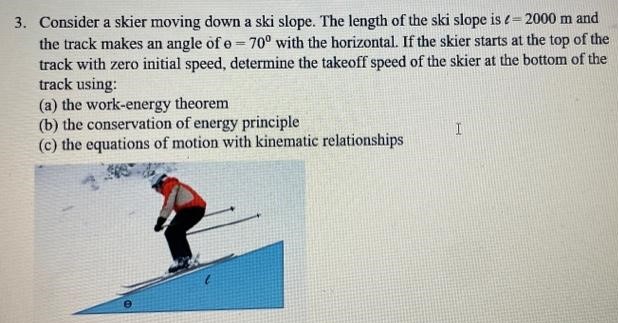Consider a skier moving down a ski slope. The length of the ski slope is ℓ = 2000 m and the track makes an angle of Θ = 70∘ with the horizontal. If the skier starts at the top of the track with zero initial speed, determine the takeoff speed of the skier at the bottom of the track using: (a) the work-energy theorem (b) the conservation of energy principle (c) the equations of motion with kinematic relationships
